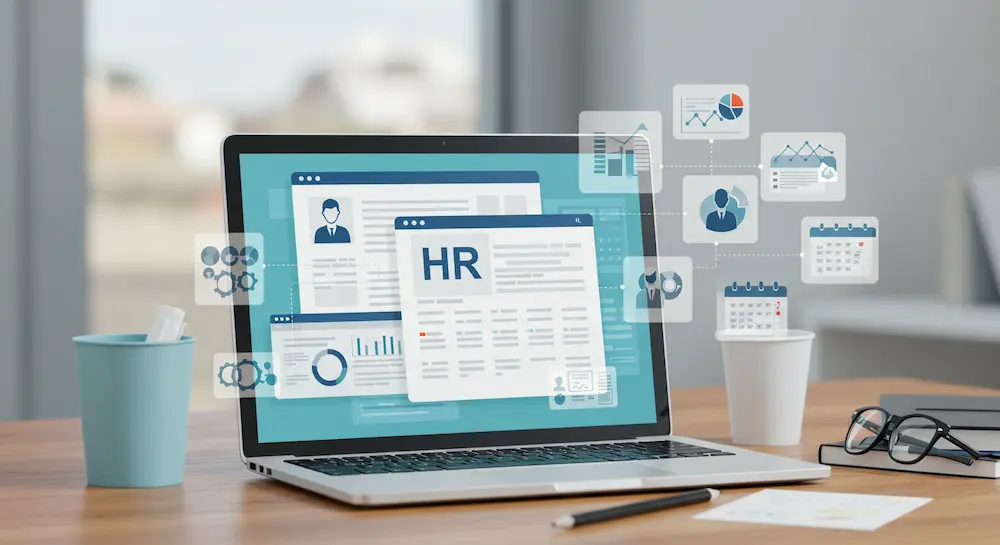Modern farms are embracing digital tools at an ever-faster pace. Among these tools, free farming apps stand out for helping smallholder and large-scale farmers alike track weather patterns, monitor soil health, and optimize planting schedules—often at no cost. These applications, typically downloadable to smartphones or tablets, can deliver real-time data and insights, letting farmers respond quickly to changing conditions.
“Agriculture is no longer just about intuition. With these free tools, every small decision can be data-driven,” says Tamer Badr, owner of Singleclic. “That shift to technology fosters healthier crops, better yields, and more sustainable farming techniques.”
In this article, we’ll explore how free farming apps support day-to-day tasks, highlight the different categories of tools available, and point out potential pitfalls if you rely on them exclusively. Whether you’re a hobbyist gardener or managing sprawling acres, these no-cost digital platforms can simplify tasks and push your harvest to new heights.
Introduction
From seed selection to pest control, the digital era has thrust countless new resources into farmers’ hands. Free farming apps stand out because they lower the entry barrier for technology adoption, letting budget-conscious growers test new methods without large up-front expenses. These apps often cover crucial areas like weather forecasting, planting calendars, yield tracking, and even basic finance management.
But while no-cost solutions can spur experimentation, they can also come with drawbacks—like limited offline functionality, lack of advanced analytics, or in-app ads. The real trick is determining which free features truly serve your farm’s daily operations and which advanced (potentially paid) solutions you might eventually need.
People Are Always Asking
- “Are free farming apps reliable enough for commercial farms?”
- Answer: Many can handle fundamental tasks, but large-scale operations may prefer advanced paid tiers for in-depth analytics or custom integrations.
- “Do they work offline?”
- Answer: Some do provide offline data entry, syncing later when connected. Others rely heavily on internet connectivity. Check each app’s specs.
- “Can these apps replace traditional soil testing or weather stations?”
- Answer: They provide guidance but aren’t full substitutes for specialized equipment or professional advice. They can, however, complement and streamline manual methods.
- “What if I need a more localized forecast?”
- Answer: Certain apps integrate region-specific data or crowd-sourced input. Confirm coverage for your area before relying heavily on it.
- “Is the data secure when using these apps?”
- Answer: Reputable apps often use encryption and follow data privacy standards. However, always read the privacy policy to ensure your farm’s data remains confidential.
Types of Free Farming Apps
- Weather and Forecasting Apps
- Key Benefit: Real-time or short-term forecasts that help plan irrigation, harvesting, or pesticide application.
- Potential Drawback: Free versions may show ads or provide only basic forecast data without hyper-local detail.
- Crop Management Apps
- Key Benefit: Tools that track planting times, pest alerts, and recommended fertilizing schedules.
- Potential Drawback: Some free editions might limit the number of fields or acreage tracked.
- Soil Monitoring and Analysis
- Key Benefit: They interpret sensor or manual input about moisture, pH, or nutrient levels, giving basic recommendations.
- Potential Drawback: Might lack advanced AI or offline syncing for remote fields.
- Livestock Management
- Key Benefit: Track feed schedules, health records, and breeding cycles in one place.
- Potential Drawback: Minimal integration with veterinarian data or advanced analytics in free tiers.
- Finance and Recordkeeping Tools
- Key Benefit: Basic expense logs, profit/loss statements for seeds, labor, or equipment.
- Potential Drawback: Might not link directly to your bank or specialized farm accounting software.
Tamer Badr suggests, “Choose apps that target your main challenges—like unpredictable weather or cost-tracking. Don’t clutter your phone with 10 apps if you only use two effectively.”
Examples of Free Farming Apps
- FarmLogs
- Focus: Offers field mapping, rainfall tracking, and basic yield monitoring.
- Why It’s Popular: Simplifies data logging for multiple fields and provides useful in-season insights.
- Potential Drawback: Advanced analytics and detailed historical data may require upgrading to a paid plan.
- Focus: Offers field mapping, rainfall tracking, and basic yield monitoring.
- AgriApp
- Focus: Provides crop advisory tips, weather forecasts, and access to marketplace listings for seeds and fertilizers.
- Why It’s Popular: Includes a community forum where farmers can exchange experiences and tips.
- Potential Drawback: Some localized content might be limited depending on your region.
- Focus: Provides crop advisory tips, weather forecasts, and access to marketplace listings for seeds and fertilizers.
- Farm at Hand
- Focus: Allows digital record-keeping for planting, spraying, and harvesting tasks.
- Why It’s Popular: A straightforward interface that suits small to mid-size operations seeking basic task coordination.
- Potential Drawback: Lacks built-in analytics or financial tracking in the free version.
- Focus: Allows digital record-keeping for planting, spraying, and harvesting tasks.
- AvaGro
- Focus: Delivers cultivation guidelines, fertilizer calculators, and crop-specific reminders based on local weather data.
- Why It’s Popular: Recognized for up-to-date agronomic advice tailored to different crop types.
- Potential Drawback: Users may encounter ads or limited offline functionality.
- Focus: Delivers cultivation guidelines, fertilizer calculators, and crop-specific reminders based on local weather data.
- FarmWizard Lite
- Focus: Helps with livestock management, including basic health tracking and breeding logs.
- Why It’s Popular: Offers a simplified dashboard for herd data, especially handy for smaller dairies or ranches.
- Potential Drawback: To access advanced modules such as genetic analysis, you might need the paid version.
- Focus: Helps with livestock management, including basic health tracking and breeding logs.
Tip: Before committing farm-wide, test any chosen app on a small subset of tasks or fields. Evaluate how well it aligns with your processes, connectivity challenges, and data security needs.
Potential Drawbacks
- Data Accuracy
- If you rely solely on a free weather app, its general forecast might differ from your microclimate. Cross-check with local stations.
- Limited Functionality
- Some apps reserve critical features—like advanced pest detection or yield predictions—for premium versions.
- Connectivity Issues
- Farms in rural areas might have spotty internet, making cloud-based features or updates impractical.
- Ads and Pop-ups
- Free platforms often sustain themselves with ads, which can distract or slow performance.
- Privacy Concerns
- Some might collect user data. Confirm how your field records or location details are stored or shared.
Tip: If you outgrow an app’s free tier, weigh the cost of upgrading versus adopting a specialized paid solution with robust support.
Real User Experiences
María, Owner of a Small Organic Farm
“Starting out, I downloaded a free crop rotation app. Loved that it sent planting reminders. The limitation was it only supported five crop types. Eventually, I paid for the full version.”
Carlos, Dairy Farm Manager
“We used a free livestock management tool. Good for daily feed logs and basic health tracking, but not so great at forecasting feed requirements. Ended up exporting data to spreadsheets for deeper analysis.”
Sofía, Hobby Gardener Turned Market Seller
“Weather and pest alerts from my free phone apps saved my cucumbers multiple times. I think a paid option might give me better analytics, but for now, free tools handle my scale well.”
Frequently Asked Questions
- Do free farming apps handle multiple farms or only one location?
- Answer: Many limit you to a single location in the free plan. Others allow multiple fields, but you should verify.
- Are there ways to export data to spreadsheets or other systems?
- Answer: Some offer export features (CSV, Excel) even in free versions. Others require a premium subscription.
- How often do these apps update weather or crop data?
- Answer: It varies; some refresh hourly, others once a day. Real-time updates are typically part of premium tiers.
- Can I rely on them for official compliance or recordkeeping?
- Answer: For official audits or compliance logs, a more robust, paid system might be safer. Free apps may lack advanced security or official recognition.
- What if the developer discontinues the app?
- Answer: Data continuity might suffer. Always keep backups or consider a widely adopted, well-reviewed app with an active user base.
- Answer: Data continuity might suffer. Always keep backups or consider a widely adopted, well-reviewed app with an active user base.
Practical Steps for Adopting Free Farming Apps
- Identify Your Pain Points
- Pin down your biggest challenges: weather unpredictability, pest control, budgeting, or logistics.
- Browse App Store Reviews
- Look for high ratings, especially from fellow farmers or horticulturists. Scan negative comments about bugs or missing features.
- Start with a Pilot
- Test a single app in one field or with a subset of livestock. Evaluate data accuracy, user experience, and reliability.
- Check for Offline Capabilities
- If your farmland lacks reliable internet, ensure the app works offline and syncs data later.
- Monitor Data Over Time
- Evaluate if recorded metrics—like yield data or rainfall logs—actually improve your decisions. If so, you might consider upgrading or exploring specialized solutions.
Tamer Badr adds, “Constantly gather feedback from workers or family members who use these apps daily. If the tool simplifies their tasks, it’s a keeper. If it complicates them, it’s worth looking elsewhere.”
Conclusion
Free farming apps provide an accessible entry into the digital side of agriculture. They streamline tasks, whether that means weather forecasts, automated pest alerts, or basic financial tracking. For novices, they’re a great opportunity to experiment with technology that can improve yield and resource management—minus significant up-front costs.
Still, these no-cost solutions do have inherent limits, like fewer advanced features, ads, or incomplete data sets. Farmers with larger operations or more complex needs might eventually move to robust paid platforms for better analytics or integration with specialized hardware. But for modest tasks—like a small orchard, a livestock pen, or a newly established farm—free options can fill the gap efficiently.
The main challenge is ensuring you pick an app that aligns with your local climate patterns, connectivity constraints, and scale of operations. By dedicating time to read user reviews, testing the app in a pilot scenario, and verifying data accuracy, you can harness the best these free tools offer. Done right, you’ll experience improved planning, fewer unexpected losses, and a step toward a more modern, data-driven approach to farming—without busting your budget.










